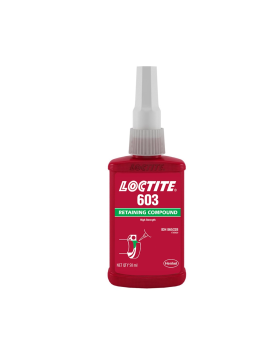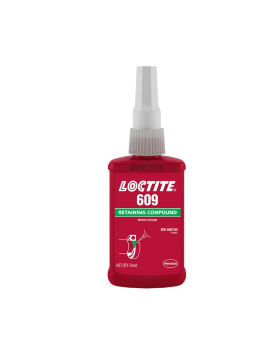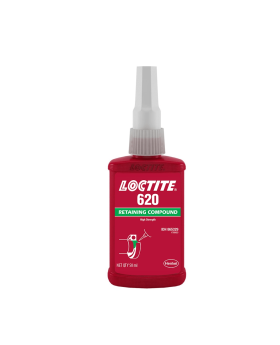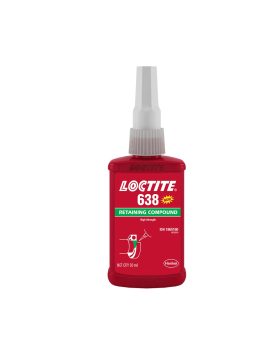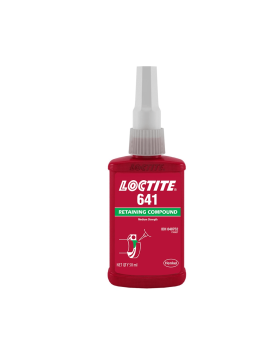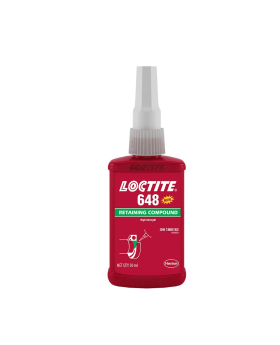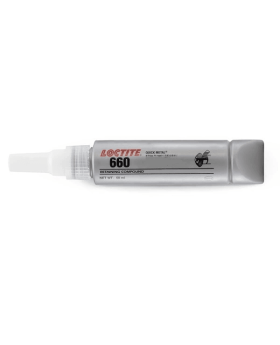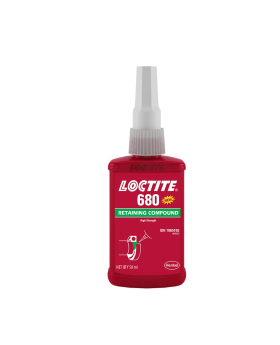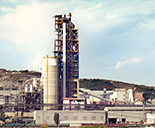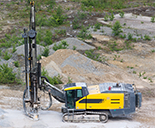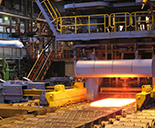Loctite Bearing
Retaining
Compounds

better suited to fulfil your requirement.

LOCTITE retaining compounds offer an inexpensive and effective method to secure bearings, bushes and cylindrical parts into housings or onto shafts. Because LOCTITE retaining compounds are liquids, they take up the entire space between two close fitting cylindrical surfaces and harden into a tough thermoset plastic,to unitize the assembly. This increases the maximum load transmission capability of the assembly and eliminates fretting corrosion and expensive machining.
LOCTITE vs Interference
While interference fits might seem to deliver good contact, however, there is only 20%-40% actual metal-to-metal contact. LOCTITE can achieve 100% contact by filling the gap completely.
LOCTITE vs Keys and Splines
Keys and splines increase contact surface area, but do not eliminate the gaps which LOCTITE can fill completely.
LOCTITE vs Set Screws and Pins
Set screws and pins lock the surfaces together, but do not eliminate the gaps which LOCTITE can fill completely.
WHY CHOOSE LOCTITE RETAINING COMPOUNDS?

Unitized assembly:
- Fills all microscopic gaps
between components
and doubles the strength
of traditional fittings

No Fretting Corrosion:
- Seals against corrosion and
prevents micromovement - Increases component life

Uniform Stress Distribution:
- Eliminates failure and
scrap due to stress cracking - Ensures high torque transmission

Allow fitting of dissimilar metals:
- Used for fitting dissimilar
metals without
the threat of galvanic
corrosion

Reduce Costs:
- Allows for relaxed
machining tolerances
slashing machining costs
by 30%











Industrial Manufacturing Maintenance
Industrial equipment manufacturers design and build machines that make other machines and end products.
LOCTITE products help industrial equipment manufacturers in maintaining smooth operations and high productivity of all machines.
-

Maintenance of Electric Motors
-

Maintenance of Pumps
-

Maintenance of Gearbox
The harsh environment of the paper and pulp industry leads to a variety of maintenance challenges.
LOCTITE can help in eliminating the challenges and increase the productivity of machines.
-
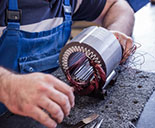
Maintenance of Electric Motors
-

Maintenance of Pumps
-

Maintenance of Gearbox
The versatile end products manufactured put immense stress on the processing machinery.
LOCTITE products help the machines run smoothly under extreme working conditions, while maintaining high productivity.
-

Maintenance of Electric Motors
-

Maintenance of Pumps
-

Maintenance of Gearbox

The LOCTITE®X digital manual for creating reliable and effective bonded joints. Over 70 years of adhesives expertise. The ultimate resource for achieving technological and industrial breakthroughs.
START READING
LOCTITE offers a wide range of retaining compunds suitable for various applications. For best results, it is critical to apply the right Retaining compound to increase the reliability of cylindrical fittings like bearing on shaft.
See How
LOCTITE retaining compounds offer several advantages over conventional methods, thereby ensuring limitless strength for secure bearings and cylindrical parts.
Know More
LOCTITE retaining compounds are a must have when it comes to retaining cylindrical assemblies. Explore the various application areas where they can increase reliability and reduce cost.
See More
LOCTITE 638 resists high strength and temperature, making cylindrical fittings highly reliable for increased productivity. Its robust cure mechanism makes it a must have for your maintenance kit.
Know More
A cement manufacturer was faced with repeated cases of bearing loosening on shaft due to high temperature and torque load. Read how LOCTITE 638 Retaining Compound helped unitize the assembly against dynamic rotational loads.
Read MoreFrequently asked questions
Here’s a list of queries with responses that might help you.
The optimum fit for thinner products (low viscosity) like LOCTITE 603 and LOCTITE 609 is 0.025 mm to 0.08 mm, and for thicker products (high viscosity) like LOCTITE 638 and LOCTITE 648 it is 0.05 mm to 0.1 mm.
For Loctite retaining compound,the recommended range for surface roughness of the cylindrical parts is 0.8 micron to 3.2 micron. You can also go for surface roughness as high as 50 micron if eccentricity is not a concern.
For slip fit assemblies only apply LOCTITE retaining compounds to one of the parts and assemble with a twisting/turning motion. For tight/close fitting assemblies with minimum clearance, apply to both parts.
Yes, all LOCTITE retaining compounds offer the dual benefit of lock and seal.
No. LOCTITE retaining compounds are thixotropic in nature, which means that they are quite viscous unless a shear force is applied. Hence, LOCTITE retaining compounds will not flow to other areas of the machinery.
We recommend the use of primer with LOCTITE retaining compounds where both the parts come under the category of 'inactive surfaces'. These metals lack the iron or copper content and thus the metallic ions that are required to fully cure the product within 24 hours. These inactive surfaces include plated parts, stainless steel, galvanized steel and anodized aluminium to name a few. On the other hand, in case both or at least one part is an active metal, then there is no need to use a primer with LOCTITE retaining compounds to ensure full cure, which is typically within 24 hours at room temperature.
To disassemble an assembly fitted with LOCTITE retaining compound, just pull the assembly apart mechanically. If necessary, apply localize heat (230 degrees celsius for 5 mins) and pull while the assembly is hot.
Yes. With LOCTITE retaining compound 660, shafts with radial gaps less than 0.5 mm can be locked. In case of a badly worn shaft, the repair can be done with LOCTITE Superior Metal.
 Product Recommender
Product Recommender  Value Calculator
Value Calculator  Track Order
Track Order
 1800 123 1922
1800 123 1922 





















































 Maintenance
of Pumps
Maintenance
of Pumps
 Maintenance
of Electric
Motor
Maintenance
of Electric
Motor
 Maintenance
of Gearbox
Maintenance
of Gearbox
 Maintenance
of Compressor
Maintenance
of Compressor
